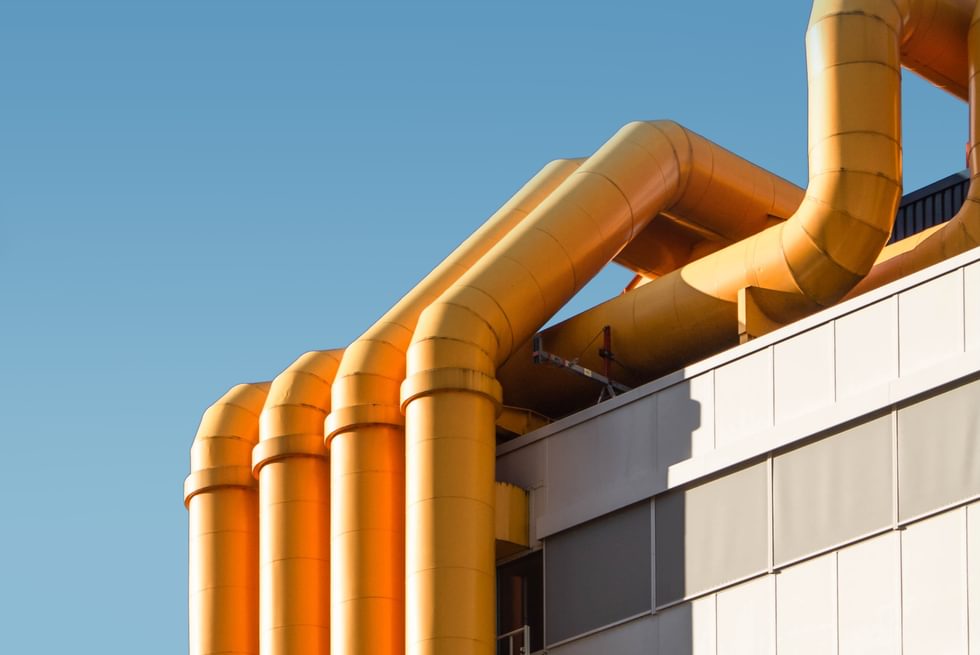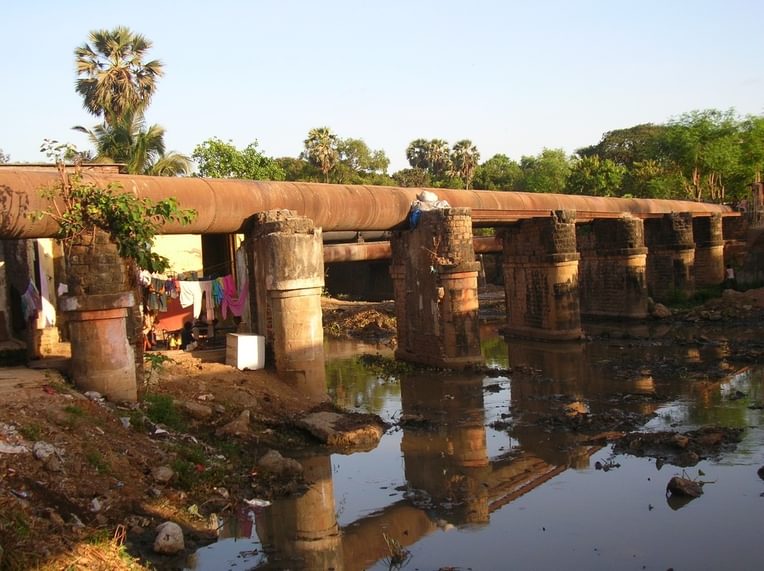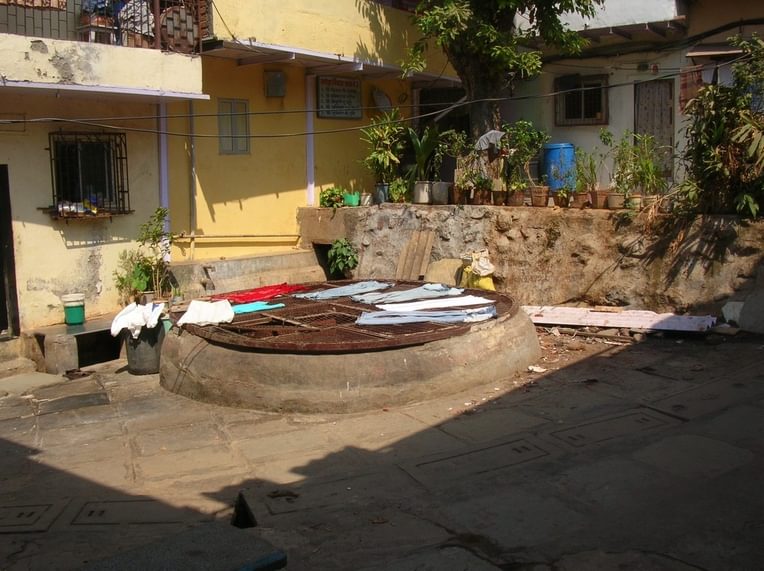Accretion
From the Series: The Infrastructure Toolbox
From the Series: The Infrastructure Toolbox

Infrastructures accrete. They gather and crumble incrementally and slowly, over time, through labor that is at once ideological and material. Infrastructures are seldom built de novo. They are innovated, installed, and brought into being on top of already existing infrastructures that both constrain and enable their form (Star 1999). In this brief essay, I highlight how infrastructures are unsteady accretions of non/human relations to make three points. First, as gatherings, infrastructures are brought into being out of a multiplicity of historical forms and technopolitical relations that, while bound together, seldom fully cohere. Second, as accretions that are formed slowly over time, infrastructures are made by and constitutive of diverse political rationalities, past and present. Finally, thinking of infrastructure as accretion draws our attention to how these are not smooth surfaces that perform as planned; instead they are flaky, falling-apart forms that constantly call out for projects of management, maintenance, and repair.

As sociotechnical systems, infrastructures are improvised processes that are brought into being through non/material relations. They are an unsteady, flaky accretion of discourses, materials, practices, and technologies that actively need to be bound together through techopolitical projects. Trains, for example, cannot become an infrastructure absent a set of financial relations, governmental policies, ideas about time, laws, and a set of material innovations that undergird them (Latour 1996). These heterogeneous elements are seldom assembled simultaneously through processes of design and planning. Instead their formation is incremental, continuous, and often dissynchronous. Financial innovations, regulatory regimes, and material practices may gather or fall apart at different moments of time and thus enable or preclude the formation of new infrastructures.
Infrastructures are grafted onto an already-existing world. Attention to their process of accretion requires us to recognize that they coexist amidst a multiplicity of infrastructural forms and, as such, have both multiple and incomplete effects. For instance, historians and sociologists of water remind us that modern water networks were built with and on already-existing networks of wells, tanks, and river basin infrastructures (Mehta 2005). Critically, these infrastructures do not disappear with the rise of modern hydraulic infrastructures, but persist, coexist, and are often attached to this new regime (Furlong 2014). These infrastructures of times past continue to matter, even if laws, policies, and aspirations prefer to ignore them.

Thinking of infrastructure as accretion draws attention to the histories, temporalities, and precarities that infrastructures depend on. While infrastructures are oriented toward enabling mobilities for the future, their ability to do so depends on already-existing social-material contexts in which they are embedded. For instance, to build a private water network, financial, technological, and ideological innovations of the present need to be grafted onto the already-formed promises, politics, and materials of the extant network. As such, infrastructures simultaneously manifest multiple temporalities and histories (Bowker 2015). As ongoing accretions of political technologies past and present, infrastructures reveal how, whatever the political geist of a given moment, their material histories of distribution, inclusion, and exclusion continue to matter (Collier 2011; von Schnitzler 2015).
Theorizing infrastructure as accretion helps us revisit questions of political responsibility and agency in modest ways. Modest, because as accretions, infrastructures are made with and depend on the reliability and cooperation of human and nonhuman others—excluded publics, pipes, valves, and metals (Braun and Whatmore 2011). For infrastructures to perform as they were designed, their various non/human relations must act as planners and administrators expect them to. They seldom do. For example, regardless of the stories and technologies with which we form hydraulic infrastructures, water’s bulkiness and weight (Bakker 2010), relations with metals (Barry 2013), and necessity for life mean that the planner’s designs for uninterrupted flow are constantly disrupted by plumbers, bacteria, and leaks in everyday life (Anand 2015). These frequently get in the way, repurposing pipes for unanticipated ends.
Thus infrastructures necessarily exceed their design. As accretions, they seldom cohere and produce the smooth frictionless surfaces of modernity (cf. Tsing 2005). They are rough and erratic. They peel and they crumble. They are (materially and ideologically) both flaky and fickle, attracting unwanted others. They constantly call out for projects of policing, maintenance, repair, and reproduction (Jackson 2015). Accordingly, the accretions of infrastructure seldom act like systems of total power (cf. Wittfogel 1957). Instead they are crusty, accreted forms that are made as much of modernity’s debris, its rubble and ruination, as they are of its promise.
Anand, Nikhil. 2015. “Leaky States: Water Audits, Ignorance, and the Politics of Infrastructure.” Public Culture 27, no. 2: 305–30.
Bakker, Karen. 2010. Privatizing Water: Governance Failure and the World’s Urban Water Crisis. Ithaca, N.Y.: Cornell University Press.
Barry, Andrew. 2013. Material Politics: Disputes along the Pipeline. Chichester, UK: Wiley-Blackwell.
Bowker, Geoffrey. 2015. “Temporality.” In “The Infrastructure Toolbox,” Theorizing the Contemporary Series edited by Hannah Appel, Nikhil Anand, and Akhil Gupta, Cultural Anthropology website, September 24.
Braun, Bruce. 2005. “Environmental Issues: Writing a More-than-Human Urban Geography.” Progress in Human Geography 29, no. 5: 635–50.
_____, and Sarah Whatmore, eds. 2011. Political Matter: Technoscience, Democracy, and Public Life. Minneapolis: University of Minnesota Press.
Collier, Stephen J. 2011. Post-Soviet Social: Neoliberalism, Social modernity, Biopolitics. Princeton, N.J.: Princeton University Press.
Furlong, Kathryn. 2014. “STS beyond the ‘Modern Infrastructure Ideal’: Extending Theory by Engaging with Infrastructure Challenges in the South.” Technology in Society 38: 139–47.
Jackson, Steven. 2015. “Repair.” In “The Infrastructure Toolbox,” Theorizing the Contemporary Series edited by Hannah Appel, Nikhil Anand, and Akhil Gupta, Cultural Anthropology website, September 24.
Latour, Bruno. 1996. Aramis, or the Love of Technology. Translated by Catherine Porter. Cambridge, Mass.: Harvard University Press. Originally published in 1993.
Mehta, Lyla. 2005. The Politics and Poetics of Water: Naturalising Scarcity in Western India. New Delhi: Orient Longman.
Star, Susan Leigh. 1999. “The Ethnography of Infrastructure.” American Behavioral Scientist 43, no. 3: 377–91.
Tsing, Anna. 2005. Friction: An Ethnography of Global Connection. Princeton, N.J.: Princeton University Press.
von Schnitzler, Antina. 2013. “Traveling Technologies: Infrastructure, Ethical Regimes, and the Materiality of Politics in South Africa.” Cultural Anthropology 28, no. 4: 670–93.
_____. 2015. “Ends.” In “The Infrastructure Toolbox,” Theorizing the Contemporary Series edited by Hannah Appel, Nikhil Anand, and Akhil Gupta, Cultural Anthropologywebsite, September 24.
Wittfogel, Karl. 1957. Oriental Despotism: A Comparative Study of Total Power. New Haven, Conn.: Yale University Press.